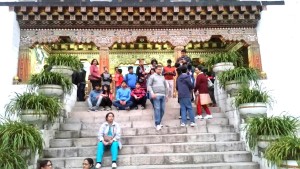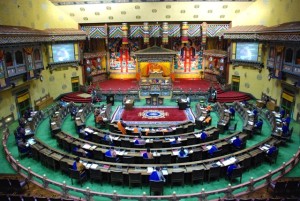Bhutan opens up more entry point for visitor
Govt. to allow entry of regional tourists through all border towns
The National Assembly on 18th Jan, 2019, endorsed entry and exit of regional tourists through the border towns of Samdrupjongkhar, Gelephu, Samtse, Nganglam, and Panbang.
Currently, Phuentsholing is the only entry point for regional tourists.
However, entry and exit would be allowed from these points with a condition that the tourists use Bhutanese vehicles and guides. This is to ensure security.
Of the 43 members, 40 voted “Yes’, two voted ‘No’, and one abstained from voting. The government is also likely to consider entry and exit through Lhamoizingkha and Jomotshangkha.
The House also endorsed the proposal to open direct flights between Guwahati to Yongphula, Bumthang and Gelephu with 40 ‘Yes’ votes. Three voted ‘No.’
Dewathang-Gomdar MP, Ugyen Dorji, moved the motion to institute special and targeted measures to promote tourism for balanced regional development. He said that tourism was an important sector for development.
In 2017, Bhutan recorded tourist arrival of 254,704, of which 183,287 were regional tourists. The sector contributed USD 79,807 to the exchequer.
While the sector has benefited the country in terms of revenue and employment generation, Ugyen Dorji said that not all 20 dzongkhags shared its benefits equitably. “Only a handful of dzongkhags have reaped its benefits. The others are lagging behind.”
Paro had the highest number of international arrivals at 27.5 percent in 2017, followed by Thimphu and Punakha with 26.4 and 23.1 percent respectively. Wangdue saw 7.9 percent arrivals while Bumthang received 5.1 percent of the arrivals.
The rest of the dzongkhags saw less than five percent of the total arrivals in the country. Pemagatshel, Tsirang, and Dagana did not receive any tourist in 2017.
Despite effort by the past government to promote tourism in the east, Ugyen Dorji said that nothing significant had happened to date. He said it would be difficult to ensure equal and equitable distribution of tourists throughout all 20 dzongkhags.
In terms of physical facilities, he said there was a need to provide adequate facilities, improve roads, open additional flight routes, both domestic and international, and put in place favourable policies.
“The need of the hour is to come up with targeted measures to promote and boost tourism in these regions so that the benefits of tourism is shared equitably by the people of all dzongkhags,” he said. “This will bridge the gap between the rich and the poor and ensure equity and justice, leading to the much-desired regional development.”
Draagteng-Langthil MP Gyem Dorji said that it was important first to have basic infrastructure like toilets. He said that there should be measures in place to address issues like the improper management of waste.
He said the regional tourists were seen bringing their own vehicles and affected the income generation of the people in the country.
On opening direct flights from Guwahati to Yongphula, Bumthang and Gelephu, he said that it was important to consider consulting with the airlines.
While the house agreed on the need to institute special and targeted measures to promote tourism for balanced regional development, it had a thorough discussion on the advantages and risks of opening additional entry points for regional tourists and direct flights from Guwahati to the three domestic airports in the country.
Phuentshogpelri-Samtse MP, Ganesh Ghimiray, said that he supported the proposal to allow additional entry points for the tourist in the country because it was the wish of the people of Samtse. “This was also one of our pledges.”
However, he said there were negative impacts and it was important to have measures in place for sustainable tourism management.
Prime Minister Dr Lotay Tshering said that Druk Nyamrup Tshogpa pledged to look into the entry and exit point issue during its campaign. “It is also clearly stated in our party manifesto to promote tourism and also look into the entry and exit point issues. I don’t think the members would not support this.”
Dechen Tshomo
Source – Kuensel




